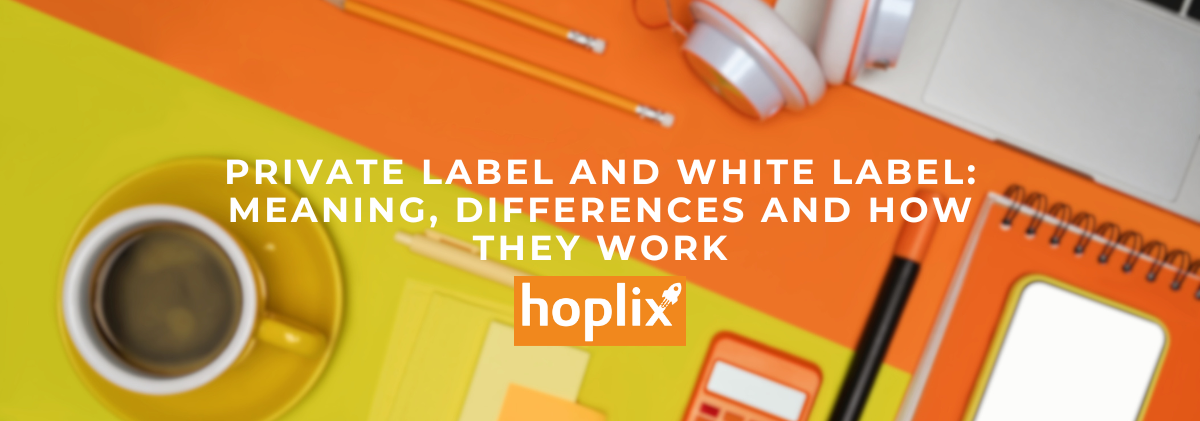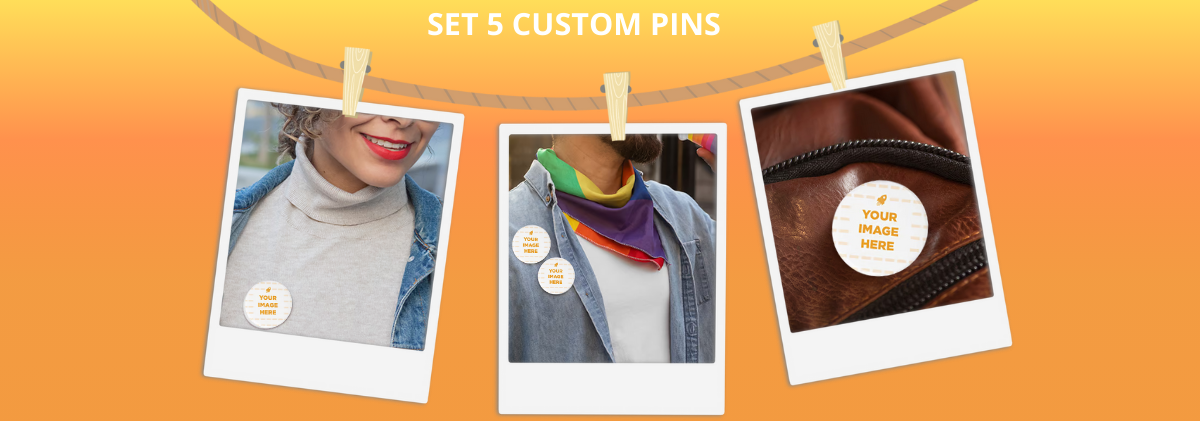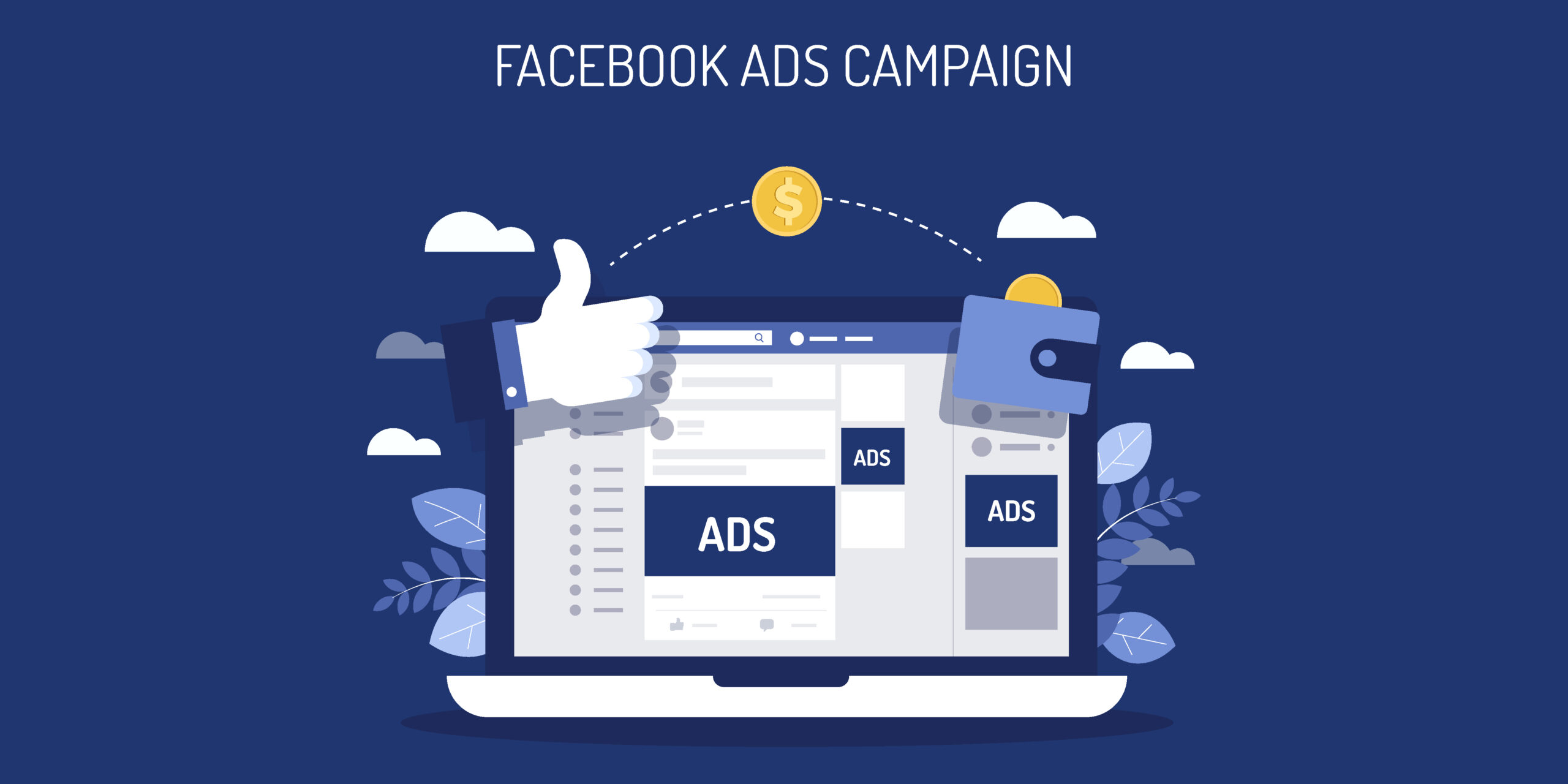
Why was this comprehensive guide to Facebook Ads needed? For many good reasons.
First and foremost, the explosion of social networking is now in the public eye, and not a few companies have decided to shift their advertising budgets from traditional media to online.
But why is Facebook so important as a digital advertising platform?
The answer is simple and lies in the numbers: more than 2 billion users use Facebook, and the ability to reach each of them with almost surgical precision highlights its enormous potential.
In this article we’re going to first answer the most common questions of our sellers who want to do business with Facebook Ads – like what it is, when it’s useful, how much it costs, etc. – and then explain in detail how it’s done. – and then explain in detail how to create a Facebook Ads campaign from scratch.
Facebook Ads: What is it?
Facebook Ads is the system that allows you to advertise on Facebook. More specifically, it allows a page manager to purchase spaces and have them displayed on the home pages of their target audience without their consent. These ads can be recognised by the sponsored heading and can be either in the news section or in the side column. They contain advertising content for awareness, following and commercial purposes.
Unlike unsponsored posts, Facebook Ads can appear several times in various time periods, following the same pattern as web ads. The intensity of the message is defined through the establishment of the campaign budget.
Why Facebook Ads?
Although positioning on Facebook is very important, unsponsored posts are unlikely to generate the same ROI as a Facebook Ads campaign. You risk being disappointed by the results and thinking that Facebook marketing is useless, quickly abandoning this vital channel. A Facebook Ads campaign, on the other hand, allows you to see the effectiveness of your campaign much more quickly. It also benefits your activity on the page. All this at the cost of an investment of money that is most often repaid by numerous benefits.
The benefits are many, at a negligible cost compared to more traditional media, we can achieve:
- Spreading the shared message
- Improvement of the service and removal of company-customer barriers
- Reduction in sales time
- Greater number of sales and interest
- Increased visibility with partnerships
- Lower marketing costs
- Higher revenues
The first hurdle with Facebook, however, is getting a following: fans who have liked you. Once you have a follower, you don’t need to spend on a dedicated campaign. How do you attract them? By creating interesting content. From scratch? Absolutely not, first you need a clear Facebook strategy: the combination of a good market strategy and good communication and empathy skills. First of all, remember that Facebook is a friendly place: copying your Standard advertising communication can be very counterproductive. Facebook users are attracted by ideas, not by products or services.
Facebook Ads: How to structure a campaign
For each Facebook Ads campaign, you need to go to Facebook Business Manager and select Create from the Ad Management area. Alternatively, you can make simpler campaigns directly from the page under Promote.

Each Facebook campaign can be defined under 4 headings:
- Campaign type
- Audience
- Positioning
- Budget and schedule
Once you have decided on a campaign, you can create your advertisement under Advertisement.
Type of campaign: always set goals!
Monitoring results is at the heart of Facebook marketing! To help you with your Facebook marketing strategy, the social network provides you with various types of objectives that you can modify to your liking. What is the goal you want to achieve?

Facebook groups them into 3 main categories: awareness, consideration and conversion:
Notoriety
- Brand awareness – page awareness and visits to web pages, SEO ranking optimisation
- Coverage – widening of the target audience.
Consideration
- Traffic – increase in the number of likes and follows on the page visits to a web page
- Interaction – increase in interactions through likes, reactions and comments to posts
- App installations – increase in installations of an advertised app
- Video viewing – increased viewership of the video
- Contact generation – increase in lead generation contacts (nominal sign-ups of users on external websites as interested users)
- Messages
Conversion
- Conversions – increased sales of products or services linked to the post
- Catalogue sales – increased sales of the products featured in the post
- Visits to the shop – increase in shop visits generated through Facebook
Remember to choose wisely because for each objective Facebook optimises your target according to the usual user behaviour.
Facebook Pixel: Monitor the success of Facebook campaigns on external websites
You can measure conversions from Facebook to external websites with the Facebook Pixel. This is a system for which you just need to insert a simple line of code into your website to track conversions. If you use a CMS such as WordPress, it will be even easier by downloading a plugin. Facebook will then record the various conversions, letting you know how your ads and your communication strategy have performed. Facebook Pixel is also useful for improving your targeting by inserting code into various referral sites.
Another way to measure micro and macro conversions through Facebook is by analysing the results of the Facebook referral with Google Analytics.
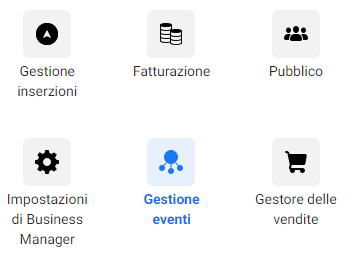
![]()
![]()
Audience: Choose the target audience for your campaign
Choosing the target audience in Facebook is a key aspect of a successful Facebook Ads campaign. Remember that every impression (ad view) is paid for! If you don’t want to risk wasting your budget, select your target audience through the various targeting options that Facebook allows you to do.
Another important thing to be aware of is that unfortunately Facebook does not allow you to do A/B tests very well. It does this very quickly and allocates 90% of the budget to the best performing ad. It is better to run two different campaigns and divide the budget between them, checking the effectiveness of the campaigns in the time you prefer.
It is often better to run several campaigns for each target group and split the budget. For example, if you want to target both men and women, don’t do a general targeting. Do a campaign with a male audience only and copy the data for another campaign with a female audience only. Split your initial budget and you will hit both audiences equally and see distinct data from both targets.
Types of targeting
- Fans who have liked.
- Similar audiences. Audiences with similar interests to your target audience and even more so to those who have liked your page.
- People who have already visited your FB page and those who have visited your website, connected in the meantime to Facebook via Facebook Pixel.
- Audience targeting (customised). Include and exclude increasingly defined characterisations in order to achieve a more precise targeting and not to waste budget. You can define your target audience through these characteristics: location, age, gender, languages, interests, behaviour and other categories. In the latter feature you can add your own.
- Detailed targeting. You can also associate and exclude one characteristic with another.
- Fans of fans. The ad will also be visible to the friends of those who have liked it, who will be curious to find out what their friend likes.
With Mark Zuckerberg’s takeover of Instagram, you can also extend your Facebook marketing to the other social network or do it differently. Currently, Instagram campaigns can only be managed by Facebook.
Positioning
Placement indicates in which spaces and devices the ad will be placed. Spaces include: news section, right column, interactive article, apps, third-party websites and Instagram feeds. By devices we mainly mean the distinction into computer-only or mobile ads. You can also choose the type of operating system, which is perhaps useful if the campaign is for a Windows or iOS application. It should also be borne in mind that the attention of mobile users is often less than that of desktop users. For some campaigns it is advisable to split into two campaigns and invest more in computer users.
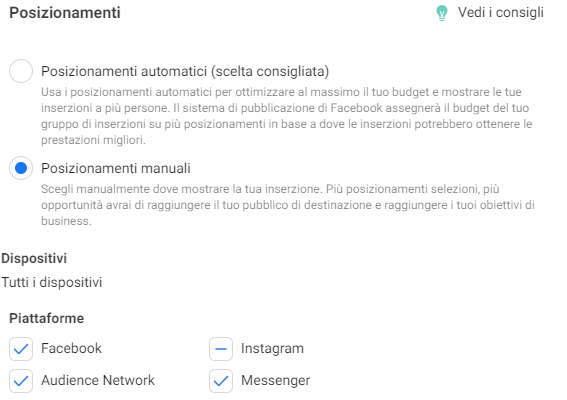
Budgeting and planning: establishing a campaign budget
Once you have decided on a campaign, you need to decide how much to invest and when to make it active. Facebook allows you to establish two types of budget:
- daily budget
- total budget
Daily budget decides how much to invest per day. Total budget decides how much to invest for the whole campaign. In both cases, Facebook automatically optimises the visibility of your ads during the day so that you do not waste your budget at night. However, you can use the Duration Planning to decide which days and time slots you want to dedicate your entire budget to. This is useful if, for example, you have a business that mainly focuses on weekends or is only open in the evenings.
Whereas the total budget type closes the campaign once it is finished and does not keep the settings recorded; the daily budget type allows you to open and close the campaign as you like, while keeping the settings recorded. This is why the daily budget is usually chosen, so that you don’t have to start all over again. Remember that any campaign needs to be properly invested in, so be sure to invest in order to hit the majority of your target audience… as a professional Social Media Manager would!

How to balance your Facebook Ads budget
Calculate that the average CPM (cost-per-mile impression) is €2. Help yourself by using the Estimated Daily Coverage tool located to the right of the space where you enter the amount. Try to fill at least half of the orange bar, i.e. the budget to reach at least half of the target.
You can also use the Optimisation function to publish the ad according to your target (chosen in Campaign type). And decide whether the bid amount is automatic or manual. If, for example, you have to deal with competitors who rely heavily on Facebook Ads, it is better to place your ad manually rather than generically, so that you aim for the same visibility as much as possible.
What works best on Facebook
Facebook is a content jungle, and in order to make your voice heard in the marketplace, investment is not enough. Precisely because advertising is usually unwanted, it is necessary to study which content strategy to pursue in Facebook advertising. In a place of interesting content, it is therefore necessary for companies to stand out by focusing their attention on their audience more than in any other context. Generating interest is the key, the presence of the brand is not the centre of the content but the co-star. Sometimes even just the appearance.
Evaluating which Facebook Ads to publish and what tone of voice to adopt is a choice that depends very much on the type of company and the result you want to achieve. Companies that make the most of social channels are usually companies that are looking for loyalty and an ongoing relationship; Facebook is optimal for this.
Guide to the types of Facebook Ads that can be published
The macro categories are as follows: photos, gifs, videos, links, ads and canvas. Each post is programmable and can be viewed in drafts; it is better to publish at precise and constant times. For each piece of content it is (almost) essential to have a call to action (CTA) that tells the customer what action we would like them to take. This will help them to find out more or even generate a conversion. Another tip is to use as little text as possible and leave a link to pages with more information.
- Photos are more easily displayed but are hardly enough to create interest. Two aspects are therefore necessary: the presence of a majority of professional photos and the originality of the content (perhaps in combination with a good post). It must be clear at first glance that it is not an amateur photo and that the company has invested in it. It is also possible to create photo albums: with the image of the post being split into the first 4 images. They can also be presented in a Carousel version: a series of images that can be scrolled horizontally.
- GIFs are an animated image format with a very short duration, which reproduces itself in a loop. They are quite effective in terms of attention because they break up the classic Facebook content and do not take up too much of the user’s time. They currently have an advantage in appearing on the Home page.
- Videos are the most interesting content within Facebook and are played independently (without sound) on the Home page. They are also less numerous than other content and being animated they attract more attention initially. However, they are more difficult to make, and in addition, only very well produced videos are actually taken into account. Taking into account that they are usually displayed within the scrolling, the first few seconds or even the first few frames are decisive for the duration of the user’s enjoyment. Two techniques are therefore recommended: the centrality of the product combined with a good storytelling technique or storytelling with the product as the protagonist at the end. With the company logo present at the end or in small print throughout the video. The video can also be optimal from a Digital PR perspective: relying on influencers and established content creators who can spread the word to their fans, particularly if the product is related. Two new high-performance video features are 360° and live videos. Usually used at exclusive events or backstage, they are a great way to bring the customer closer to the brand. During live videos, it is also possible to receive comments in real time from users, who are usually willing to comment on this type of content if it is interesting.
- Links can be the most suitable to quickly generate conversions, but being more specific to a purchase or complex content, they generate less interest. The most classic are page post links, which are nothing more than posts with an image that when clicked leads to the desired link. Both the title of the link and its description can be changed: they would automatically correspond to the name of the web page and its initial text. Whether it is a product, a piece of content or a related news item, a link is ideal for drawing attention from Facebook to other web pages. Especially for lead generation.
- Ads immediately point to the macro conversion. Currently they are not very performing because they are niche and because users do not usually enter Facebook to make purchases. But if you don’t have a website and want to experiment with this sales channel, it can be useful and less complicated. If your product could impress the customer with its convenience it could be the most suitable content. Showing prices will immediately generate concrete interest in buying. Facebook also allows you to present several products within one space. Ads can also be presented in a carousel version, which is one of the most frequently used methods. However, it is advisable not to exceed the number of products and to start with the ones that you think will attract the most attention.
- Canvas is a new type of content that allows you to use the space of a post as a door to a multimedia experience. By clicking on the image, it opens to the full screen and scrolling through you can find all kinds of content, offering the user an immersive and extraordinary experience. However, Canvas is only available on mobile devices.
A double-edged sword: tips and things to avoid
- Always be transparent and don’t ignore criticism
- Social media is an opportunity for dialogue with customers, don’t publish without listening
- Avoid controversial and hasty communications, reflect more than in any other context. On the web, communications remain eternal and an own goal can be fatal. The public is sovereign and sometimes ruthless, the cross and delight of social media.
- Avoid leaving unsatisfied influencers. This is the best way to get negative publicity.
- Each campaign must be precisely defined and measurable. Posting randomly is not very efficient.
Conclusions
Doing Facebook Ads is necessary to improve the ROI of your Facebook marketing. It is essential to invest and rely on professionals, preferably certified, who are able to use the channel in the best possible way. Social networks are a channel not to be underestimated and Facebook is the environment where most people seek communication, where they concentrate a good part of their time. Good Facebook marketing can be crucial in deciding one brand over another and it is an increasingly growing market. Take advantage of it before you have too many competitors, follow this Facebook Ads guide to create your own campaigns and make the best use of your page, get ahead of them!
The more attention you attract to your profile, the more opportunities you will have to focus the interest of your audience on the content of your page, published for free. Satisfied fans are the best possible advertising and Facebook is the king of word-of-mouth. Once you have found the right communication, they will do it all: their friends will see the interactions and will be intrigued.
Facebook marketing is transparency and entertainment, the most interesting way of communicating intensively to the customer’s soul.
Facebook Marketing options on Hoplix
Account > Store > Create and Manage > Go to your Store > Actions > Edit Store > Marketing.
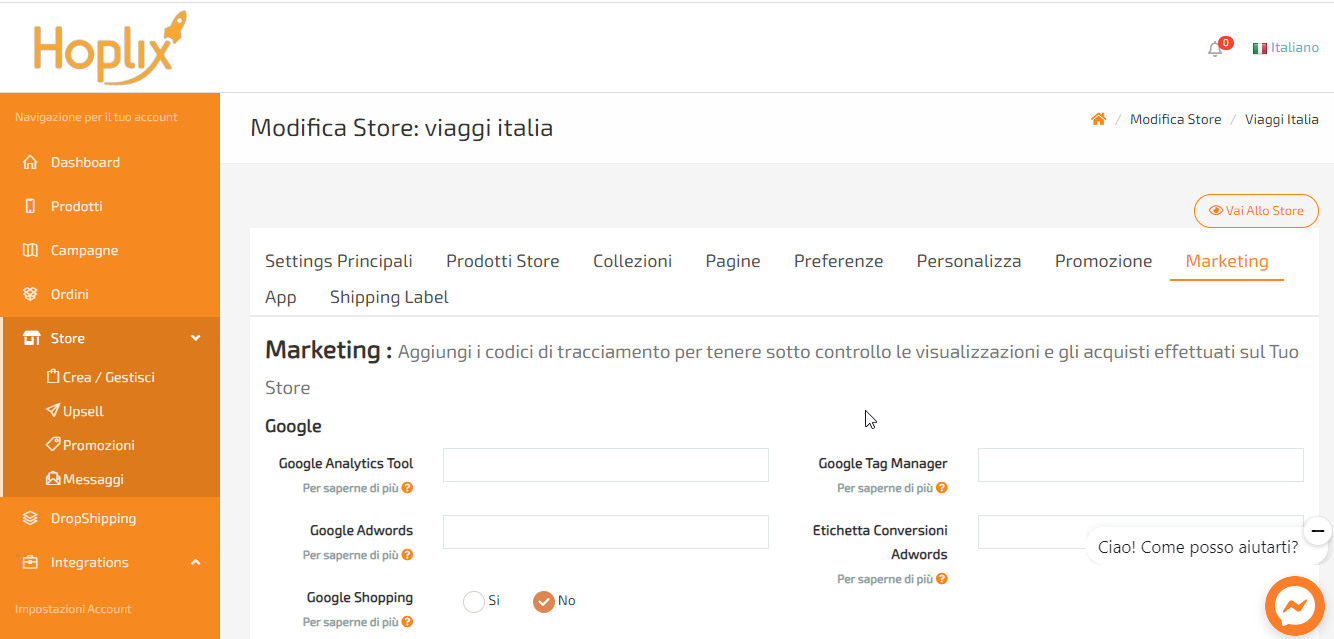
If you want to use a dedicated tracking code for the Store, enter it in the Facebook Pixel Tool (the piece of code we mentioned earlier). Otherwise the code entered in the general settings of the account will be used. The same can be done for Google ADS, but we will talk about this in a future article.

With Facebook Catalog your feed is generated within 24 hours and updated every night, so you can keep your customers up to date with the products you create every day.
Now I’m going to explain a new feature within Hoplix, which is the Store Menu.
To get a little more into the heart of Hoplix, we have recently changed and added options within your account in the Store section. You also have more customization, like the Menu. You can choose main items and categories. You also have the option to introduce a second menu in your Store. Watch this short video guide on how to build your own menu.



